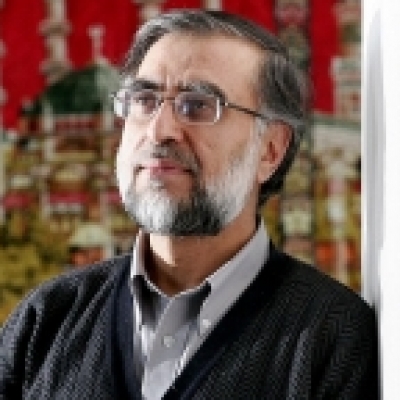



 Zafar Bangash
Zafar BangashFollowing the April 23 treaty between Russia, China, Kazakhstan, Tajikistan and Kyrgyzstan in Moscow, perhaps Harvard professor Samuel Huntington should go back to the drawing board and revise his ‘clash of civilizations’ theory. In fairness to him, Huntington had already started ringing the China alarm bells last March when he proclaimed that the Chinese are coming, perhaps minus the Muslims!
Five presidents were at hand in Moscow to sign an agreement limiting troops along their borders. ‘It took us seven years of tense talks to reach this result, which is unprecedented for Asia and the Pacific region,’ said Boris Yeltsin of Russia. The Russian and Chinese media hailed the treaty in glowing terms.
Far more significant, however, was the declaration that the two giant neighbours, who have not always seen eye to eye, signed. It followed talks between Yeltsin and his Chinese counterpart Jiang Zemin in which the two outlined their vision of the post-cold war world and voiced opposition to claims by any country for world leadership.
‘No country should seek hegemony, practise power politics or monopolize international affairs,’ said the declaration. Without mentioning any country, it clearly had the US in mind. Moscow and Beijing have been driven into each other’s arms by their common concerns about growing American threats to their security interests.
The two - one has been and the other wannabe - great powers see both the treaty and the declaration as part of their new relationship of ‘partnership aimed at strategic cooperation in the 21st century.’ Moscow has felt betrayed by America’s reluctance to help it economically and threatened by the aggressive eastward expansion of Nato into its former client States: Poland, the Czech Republic and Hungary.
The Chinese have literally turned the tables on the Americans who sought to create an anti-Chinese alliance using Japan, Taiwan, India and Tibet. The Americans have tried to exploit anti-Chinese sentiment in Japan and Taiwan as well attempted to rope in India behind this policy.
America has offered to India the carrot of a permanent seat on the security council and a larger global role in return for joining the anti-Chinese alliance. The Tibetan Dalai Lama has also been encouraged to create problems for China along its border.
The wily Indians have tried to play off one side against the other but they found the Americans’ overbearing presence too much to stomach. Besides, Beijing, too, has not been inactive. Inside the US-Russia-China triangle exists a circle: that of China, Iran and India. These have now been joined by the Russia-China-Central Asia triangle.
It is the Moscow-Beijing axis, however, that is really significant. It follows on the heels of the Shanghai declaration of April 1996 signed by the same five who gathered in Moscow last month. Russian prime minister Victor Chernomyrdin will visit Beijing later this month to follow up on talks with his Chinese hosts.
It was not so long ago that the erstwhile Soviet Union and China, then contenders for the communist world’s leadership, were at loggerheads. Exploiting this, then US president Richard Nixon entered into a strategic alliance with China in 1971 to confront the Soviet Union. It served the interests of both. China, threatened by Moscow’s hegemonic policy, found in America a useful counterweight while Washington used its strategic consensus with Beijing to undermine the Soviet Union and its brand of communism.
It was this strategic consensus that enabled the US to avenge its Vietnam debacle by tying down the Red Army in Afghanistan. China, too, played its role in backing the resistance in Afghanistan leading to the defeat of the Red Army and disintegration of the Soviet Union in short order.
The Moscow-Beijing rapprochement had started in 1985 but it picked up steam after 1989. By then the US had already realised that the Soviet Union was dead. It simply needed a burial. Its next target was China, a country of 1.2 billion people and a vast potential that would not be so easy to tame or subvert.
Unlike America, and to a lesser extent Russia, China has had a long history and a great civilization. An upstart like America which has never known civilization - unless one calls the crude combination of barbarism and decadence a civilization - cannot match China even though Washington has rekindled the ‘cold war’ policy of containing Beijing now.
China’s rapid economic development and a large, educated and trained population has placed it on the verge of an economic and military take-off. While the US seeks ways to subvert this, the Beijing-Moscow alliance provides the Chinese an opportunity to make rapid industrial progress. Besides, a trouble-free border with Russia will release badly-needed resources enabling China to pursue its goal of becoming the leading contender for superpower status in the next century.
The region encompassing Russia, China, Pakistan, Iran and the Central Asian Republics has enormous resources, especially energy and industrial raw materials. Between them, they make up a market of 1.7 billion people. It has immense potential. With China and Russia on the same side, perhaps America’s hegemony in the UN security council will also now be challenged providing a more balanced scenario for international politics.
Muslimedia - May 16-31, 1997
